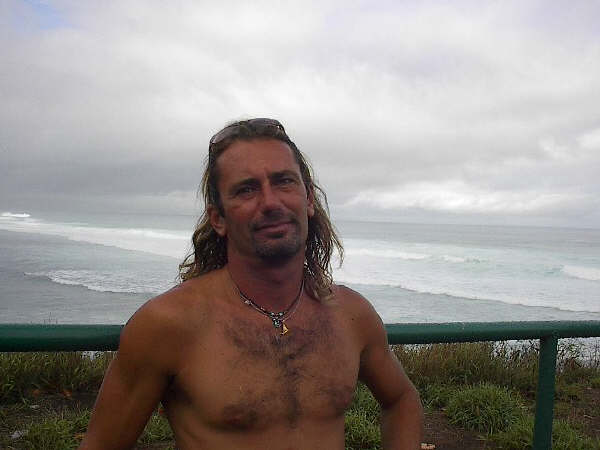It was the first time with the Maliko 280 and also the first time with the 29.5 inches long mast. I know, never change two things if you want to appreciate the difference, but the long mast was already on and I was too lazy to change it. The result wasn't much different from what is has been so far. I got up 5-6 times and was able to time the longest glide which was 45 seconds (and it was a lot longer than what previously "felt" like 45 seconds, confirming the impression that the flow of the time when flying up there seems to be different).
The bigger/heavier is the stuff you put under your board, the slower the board will paddle. And that obviously didn't help at all with the catching of the little bumps. But, a bigger wing will have more lift and so what I figured out this time is that with the 280 it's not so much about catching the bumps (they were very small), but more about getting enough of a little push so that by virtue of strong paddling and pumping, you might get it up on the foil. I think I posted already a clip of an excellent foiler able to paddle and pump a SUP board on the foil in a lake with no wind. So, in that sense, the 280 did help. Every time I got up was not because of catching a bump, but because I had enough push to make it come up by paddling and pumping.
Only when flying, the long mast eventually became an advantage, as a couple of times it made my flight longer by avoiding overfoiling. I already had no doubt that with the short mast it would be easier to take off, but I wasn't expecting Alex Aguera to comment on the phone that that would actually be MUCH easier. The long mast is: longer, thicker, wider, stiffer, heavier and overall draggier. That is the price to pay to avoid frequent overfoilings, but when you're learning to take off in the middle of a semi-flat ocean it sure doesn't help.
Next time could be as soon as today, it depends how by back recovers, as all that strong paddling on one side and that pulling the nose of the board up with the right leg really messes it up. Nonetheless, I absolutely love this incredibly difficult challenge and the environment where it takes place. I don't know if I'll ever learn, but for sure my ability to zenfully turn numerous possible frustration moments into joy for being out there by myself and trying, is already at master levels.
Up at Hookipa, the Aloha Classic saw another good day of competition. Here's a photo by Jimmie Hepp from this gallery.

This is a one minute recap of some sick moves from the completed Pro's contest.
IWT Aloha Classic 2018 Pro Men & Women Final Day from International Windsurfing Tour on Vimeo.
5am significant buoy readings
South shore
W
1.6ft @ 13s from 216° (SW)
SW
1.4ft @ 13s from 179° (S)
SE
1.6ft @ 13s from 155° (SSE)
Lanai
1.1ft @ 14s from 203° (SSW)
Surprising little readings at all the buoys (Barbers not in the Surfline page at the moment). Just like Pat Caldwell, I was expecting not to find anything at all:"Greatest odds for surf to climb a notch would be Monday from 208-220 degrees. A marginal gale in the Tasman 10/27-28 was the source."
Now, if in the water there was a bigger swell from any direction, let's say a NW ground swell or a strong E windswell, those readings wouldn't be there, in my opinion. Without being "overwhelmed" by other bigger swells, the buoys are ably to pick whatever tiny background energy there's in the water, but unfortunately the Ala Moana webcam confirms the lack of a proper swell. Some little lines once in a while, better than flat though.

North shore
Pauwela
4.1ft @ 8s from 62° (ENE)
3.5ft @ 5s from 56° (ENE)
Small windswell only today, it will be windy though, tough call for the head judge of the Aloha Classic as the wind is predicted to get light towards the end of the waiting period.
8am update: they called the contest off for the day.
Wind map at noon.

North Pacific has a small WNW fetch and the windswell one.

South Pacific has a small S fetch and a mistery very deep south in the Tasman Sea one indicated in the great circle ray map, which I couldn't really find for sure in the windy.com map. Might be because there's 6 hours of difference between the two.

Morning sky.










No comments:
Post a Comment